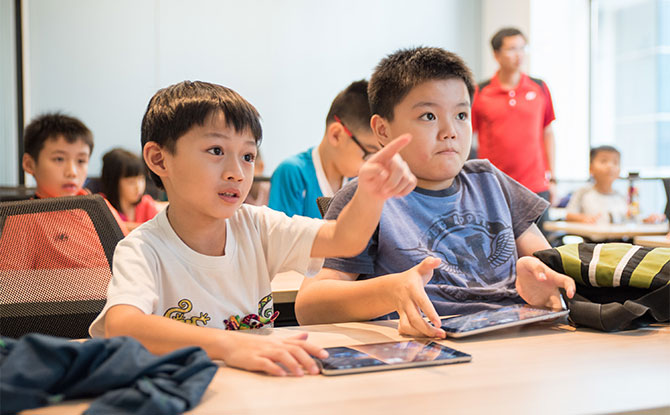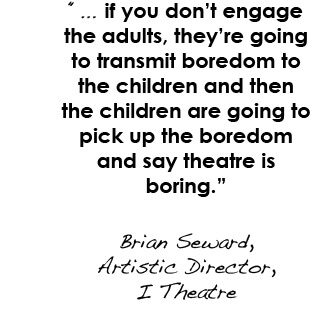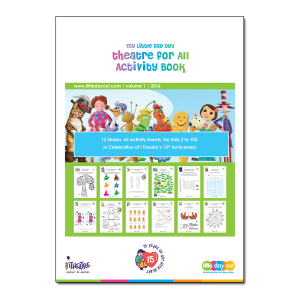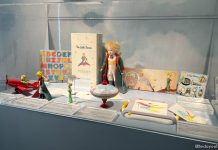
This is Part 1 of a two-part interview with I Theatre’s Artistic Director, Brian Seward. You can read Part 2 “Content & Creative Choices” here.
Mention children’s or family theatre in Singapore and I Theatre will likely be one of a very small handful of names that will crop up.
With a strong 12-year track record in the small island state known more for its pragmatic commercialism than its arts appreciation, I Theatre stages at least four children’s theatre productions each year in Singapore.
In 2013, Brian and I Theatre had staged The Little Red Hen, Hey Little Mousedeer, ACE! Festival Lite which featured a double-bill of The Magic Porridge Pot and The Enormous Turnip, and Grimm’s Fairy Tales.
DINO-TASTIC EXHIBITION: Meet a 40m Long Dino Face-to-Face
Enjoy $600 Off: 1:1 Lessons Tailored to Your Child's Needs
REGISTER EARLY AND SAVE UP TO $400: English Classes for N1 to Secondary
Never content with resting on their laurels, I Theatre is set to expand their horizons beyond Singapore’s shores in 2014 when they take their production to Kuala Lumpur. They are also in negotiations to bring a children’s theatre production to Japan, Hong Kong and Korea.
Little Day Out sat down with Brian Seward, I Theatre’s Artistic Director, to find out about the Company’s beginnings and the secrets of its success.
When did you move to Singapore from the UK?
I moved here in 1996 because it seemed like an interesting career move. I was contracted for two years to a company that just started out to deliver education drama to schools. The job offered me the chance to direct and maybe do some writing as well as just teaching. My training is in secondary/tertiary education. I was Head of Drama in a UK secondary school before I moved.
At the end two years, I thought it would be interesting to stay on and not be aligned to any particular company, just to work freelance. I wanted to do more of the directing, but it seemed like I was always so busy with the teaching, I didn’t have any time for anything.
How then did I Theatre get started?
With a colleague, we set up a company called ImagineArts, which delivered a whole range of education courses to schools. Then I was offered the opportunity to do a play involving teenage issues. We got the cast together, we had the theatre booked, we were just starting to plan out rehearsals, and then halfway through the process, the producer just disappeared.
So we were left with no money. A theatre had been booked, we had a cast in place and so we thought, why not just carry on and do the show? We went ahead with no money, no investment and the show actually covered its loss and made a little profit. Which meant we were then able to think – this worked, what else could we do?
We started doing theatre productions and they were very well-received. By that time, we thought – why not set up a society to do theatre productions? Then we started doing three and then four productions a year.
Again, it was taking so much time that in the end, I let my colleague take up the education side of things and I would focus on the theatre side. We changed the society into a company and that’s I Theatre as we know it today.
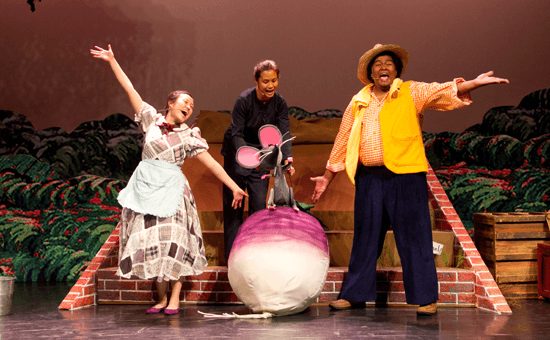
How did I Theatre end up focusing on children’s drama and theatre?
We started with youth theatre but, almost by accident, I got approached by a puppet maker and a musician who said they wanted to do a puppet musical. Then they asked, “Would you write the script? And by the way, you also have to produce the show.”
It sold more tickets than anything we had ever done before, and that started our work for children and pushed our age range down.
Children’s work has a much, much bigger audience [compared to youth theatre], and therefore is more able to sustain itself. So, we have been pushed more and more into doing musicals specifically for children.
But I always cringe at the kiddy musicals that are only for kids. I see the audience and it is composed of, in a school group, teachers and children; or in the weekend, it’s two parents and a child, so 50-60% of the audience are adults. And if you don’t engage the adults, they’re going to transmit boredom to the children and then the children are going to pick up the boredom and say theatre is boring.
Exactly! And adults and children come into the theatre with very different expectations, so how do you reconcile that?
We say that children are adults – they just haven’t got there yet. They have less life experience than other adults but they have the same brain, they have the same capacity. They don’t have the same experiences, they may not understand certain aspects and so we simplify those down but we don’t dumb them down.
You will also see there is subtext. The children will not pick up on the subtext – they pick up on the bare story. The subtext, the underlying nuances are what the adults pick up. We give it to the adults but we make it simple enough for the children to follow at the same time.
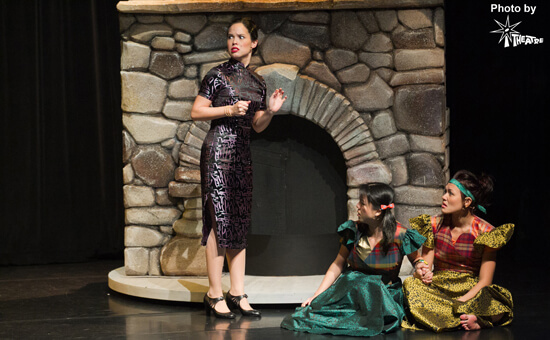
This is Part 1 of a two-part interview with I Theatre’s Artistic Director, Brian Seward. You can read Part 2, Content & Creative Choices, here.
RELATED ARTICLES
- Behind the Scenes with I Theatre – Setting the Stage
- Behind the Scenes with I Theatre – Dressing up the Little Red Hen
- Bringing Arts to the Wider Community with Theatre for All
- I Theatre’s Hey Little Mousedeer Activity Sheets
 My Little Day Out Theatre for All Activity Book (Volume 1)
My Little Day Out Theatre for All Activity Book (Volume 1)
Get a set of 65 activity sheets spanning 12 productions in celebration of I Theatre’s 15th anniversary at Little Day Out Shop.
With each purchase of this special Activity Book, Little Day Out will be making a contribution towards I Theatre’s Theatre for All programme. Buy them now!



